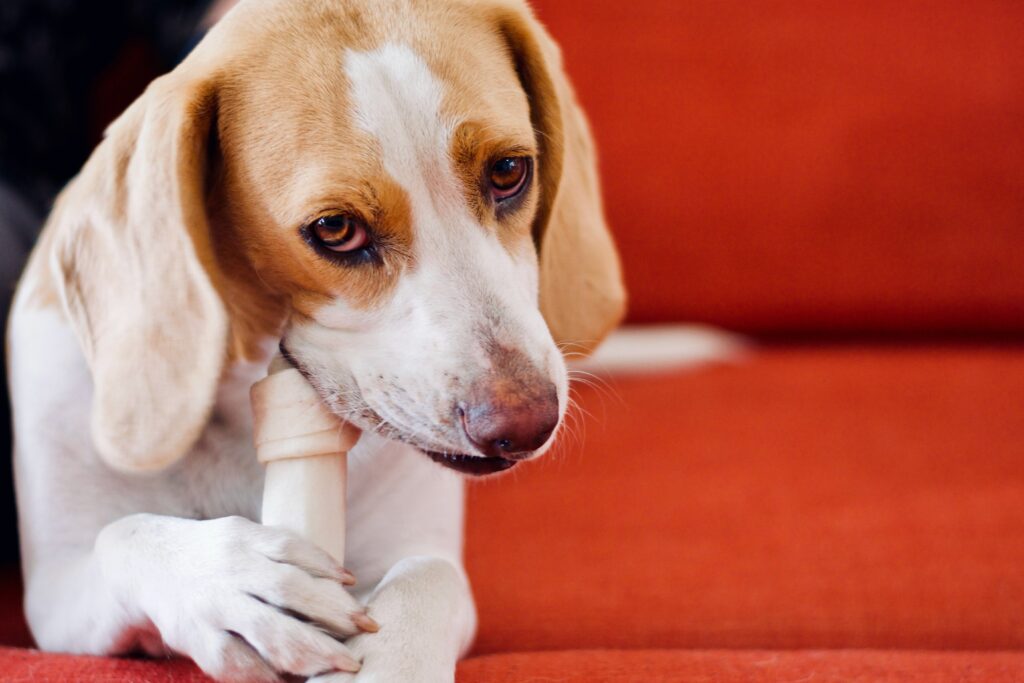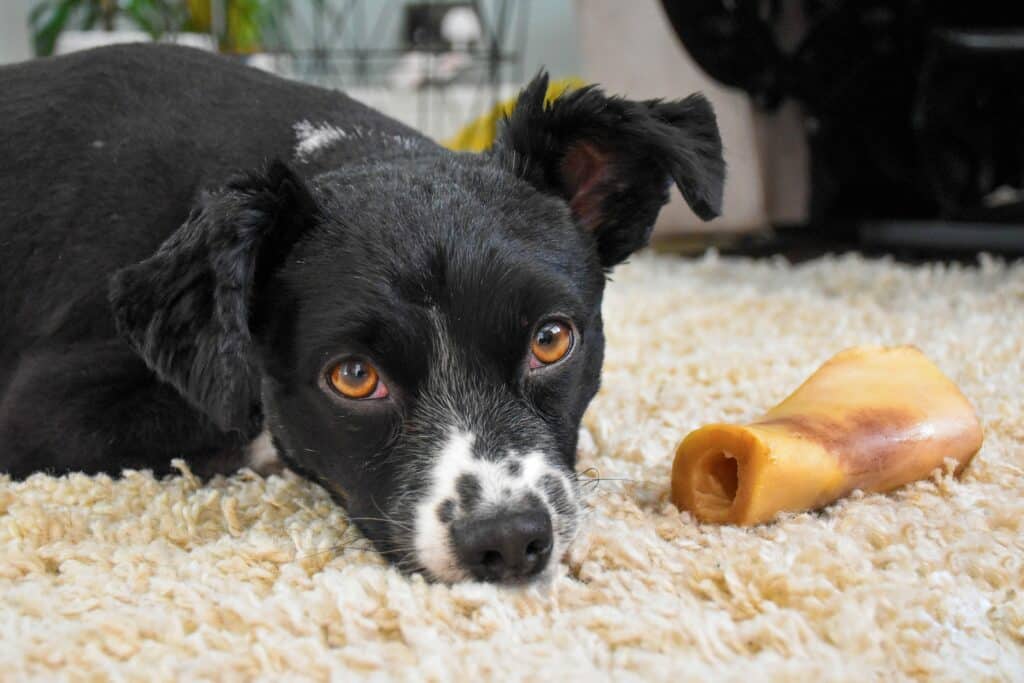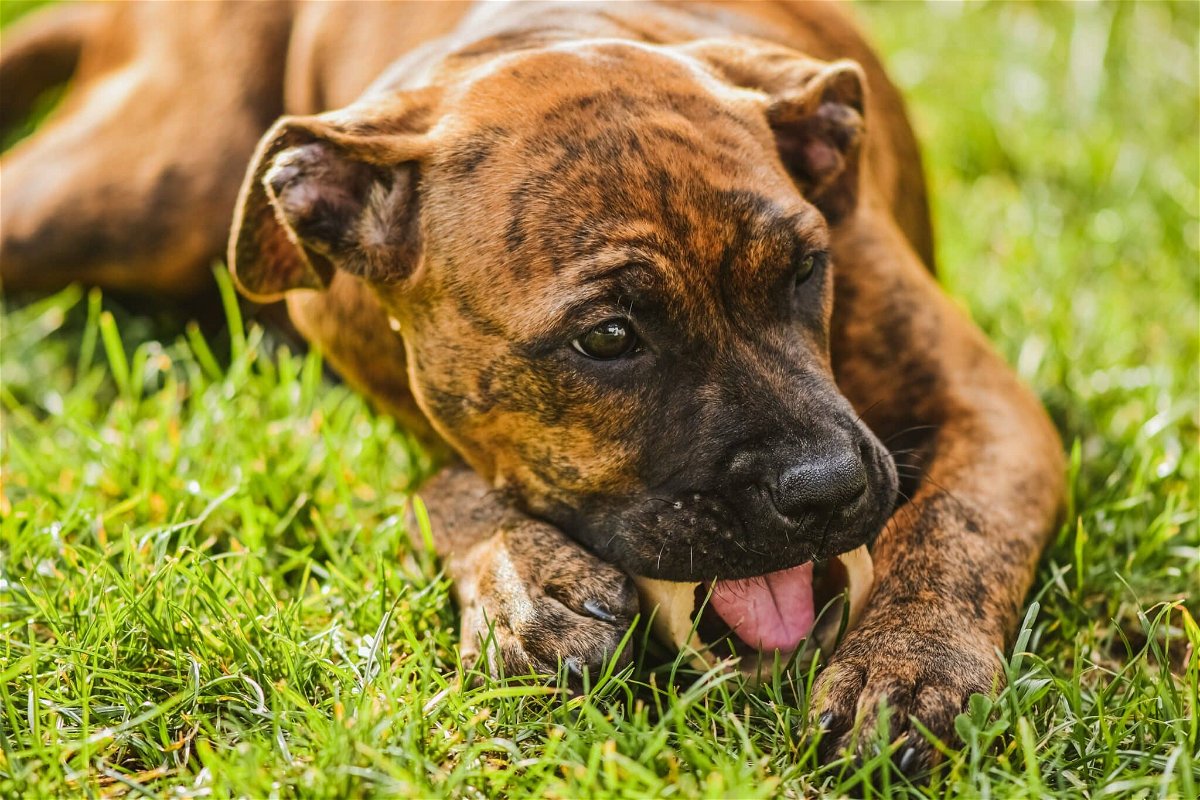We're an affiliate
We hope you love the products we recommend! Just so you know, we may collect a share of sales or other compensation from the links on this page at no additional cost to you. Thank you if you use our links, we really appreciate it!
Among many things that dogs are known for, their love for chewing bones is possibly the most widely attributed trait.
This peculiar habit cuts across dogs of all breeds and sizes. But why do dogs like chewing on bones?
Perhaps this is a question you might have asked yourself during the first few weeks of pet parenting.
Bones are not only tasty and nutritious for dogs, there are a whole host of other reasons why they find it satisfying to take a few munches every day.
Follow us along as we seek to provide you with the instinctual, psychological, and practical perspectives of this behavior in our furry friends.
Keep reading to find out the safety precautions you need to know when giving your dog chew bones for your dog’s well-being.
Why Do Dogs Like Bones?
The Instinctual Aspect
Dogs have the primal instinct to chew and gnaw, and this is the major reason why dogs chew bones.
The unbeatable connection between dogs and bones can be dated back to their wolf-like ancestors who hunted in the wild for ages.
Dogs have strong teeth and jaws similar to their forefathers who used them for chasing down prey and chewing their meat and tough bones.
These wild canines sought out deer and bison for their daily food during both high and low seasons.
They hunted in packs and after killing their prey, each wolf would tear into the meat and get a bone piece for themselves walking away in readiness to chew it up.
Wild dogs did this daily for their survival and protection. This trait has since been passed down to our present domesticated dogs even though they don’t have to hunt for food.

They still have the passion and desire to chew on bones for flavor and comfort too. Wild dogs would chew on many types of bones without much trouble but you should not give your furry friend all types of bones.
It is recommended to find bones and chews that are safe for your dog. And while at it, you should endeavor to find the most appropriate bone size and shape for your dog to prevent splintering and choking if ingested.
If your puppy grows to become a heavy chewers, we’ve created a reviewed guide for the best dog bones for aggressive chewers to redirect destructive habits.
The Psychological Aspect
Dogs can get psychological satisfaction when they chew on bones. A dog’s brain will release dopamine and serotonin hormones while chewing on bones and this makes them feel happy and comfortable.
Another ‘happy hormone’ that is released during chewing is known as endorphin. The work of this hormone is comparable to the feeling humans get when laughing.
Therefore, dogs can do this to tone down their stress and separation anxiety, especially when left alone for some time.
This chewing pattern can also be a form of self-entertainment and mental stimulation for dogs. They will chew on and play with the bone for some time whenever they feel bored.
Dogs who chew on bones are less likely to develop unwanted behaviors such as destructive chewing and excessive paw-licking.
Dogs will also chew on bones when they want to burn down the pent-up energy which helps them to calm down.
The Practical Aspect
The practicality of dogs chewing on bones can be observed as the benefits they get from this activity in terms of their physical health and mental well-being.
Even though it is safe for dogs to chew on bones, you need to find the best ones to satisfy their cravings and nutritional needs.
Here are some of the benefits of giving dogs an appropriate bone to chew on:
- Dogs who chew on bones regularly are less likely to chew and lick on their paws.
- Prevents the accumulation of plaque on your dog’s teeth by producing saliva enzymes during the process.
- It also helps teething puppies relieve their pain.
- Bones are packed with trace minerals and other nutrients which can be valuable for your pup’s wellbeing. As the dog struggles to get the meat from the raw bone, they are also taking in some calcium.
- Chewing on bones helps your dog in maintaining their jaw strength and muscles.
- Chewing helps to stimulate your dog mentally and physically.
5 Types Of Bog Chew Bones
1. Rawhides
Rawhides are made from the skin of farm animals such as cattle and pigs. The skins are dried and prepared for dogs to eat.
These chews are processed differently at the manufacturing level. Some are totally natural while others have been bleached to make them white.
Substandard companies are notorious for making rawhides that are bad for dogs to eat. Such companies will not process the hides properly to make a safe product for your dog.
Bad rawhides can be dangerous for your dog because they are almost indigestible and packed with harmful bacteria.

Pressed rawhide is very tough among this lot and could last longer for your dog. If you are looking for the perfect rawhide for your pup, we recommend that you check out the most reputable companies that deal in such.
Rawhides can be too hard for puppies to chew; you should wait until your little pooch is 6 months or older before giving them these treats.
2. Antlers
These bones are sourced from the antlers of deer or elk and are one of the most preferred bones for heavy chewers.
This is because of their long-lasting nature.
They are packed with sweet-smelling bone marrow which most dogs cannot resist. They are also a good source of calcium, phosphorus, and other trace minerals for your furry friend.
They come in a variety of shapes and sizes and you can be sure to find the perfect one for your canine friend. We recommend looking for a split one when introducing your dog to this bone for the first time.
Since antlers can be hard to chew, they might break your dog’s teeth if you don’t get the right one for them. Yes, it’s that serious!
3. Bully sticks
Bully sticks are most commonly made from beef and they come in many shapes and sizes for every dog breed.
The best ones for a dog’s health are made with only one ingredient without any other formulation.
They are simply dried or processed beef made into healthy treats for your dog which are easy to digest. You can go for the ones without odor if you don’t prefer their smell.
4. Raw bones
Raw bones are naturally derived from beef legs, pigs, or any other edible animal. They are typically uncooked, unprocessed, and untreated. They are only frozen to increase their shelf life and in preventing the build-up of bacteria.
Raw bones are best for cleaning your dog’s teeth and gums. As dogs dig out the natural marrow from these bones, continuous chewing helps scrape off tartar.
They also have naturally occurring live enzymes which help your dog in breaking down the plaque on their teeth and kill germs on their gums.
Raw marrow bones are almost unsplinterable hence there is a reduced risk of choking and blockage.
Dogs chewing on raw bones can be messy and could make the cleaning process hard. We recommend giving your dog this treat on a hard floor for easy cleanup.
5. Nylabones
These are synthetic chew bone toys made to resemble real bones from cows, poultry, or pigs.
They may lack the nutritional benefits of natural bones but they are formulated with natural flavors to invite your dog for a munch. Nylabones are best for teething puppies and dental cleanup in dogs.
If you decide to get your dog some nylabones, we recommend that you should go for the ones formulated with natural and edible materials.
It is good to also choose the ones with no added sweeteners or preservatives.
6 Safety Precautions When Giving Your Dog A Bone
You should always take some safety precautions when giving your dog chewing bones. This will ensure that they have a smooth and enjoyable chewing experience and get the full benefits.

Some of the precautions to keep in mind include the following:
- Give your dog uncooked bones since the cooked ones can get fractured into flakes and may cause choking and severe injury to your dog’s mouth.
- Ensure your dog has eaten before giving them a bone. This will reduce the likelihood of them chewing up the bone with haste, splintering, and swallowing hazardous shards.
- Wash the bones with clean water before giving them to your pup. This will remove the bacteria that might have accumulated on the product with time.
- Always get the right bone size for their breed as they age. Do not give your dog one which they can swallow whole. An appropriate bone should be larger than your dog’s muzzle so that they don’t chew it whole.
- Supervise your dog as they munch on the bone. Your pup might choke as they try to chew and you don’t want to be far away when this happens.
- Let your dog eat the bone for a maximum of 15 minutes and store it in the refrigerator. Throw the bone away after 3 or 4 days.
Don’t Starve Your Little Pups
You might be thinking that bones are only to be chewed by adult dogs but that’s not the case. Puppies can also enjoy and take on their chews safely. Your teething puppy will appreciate a chewing bone to ease down their teething discomfort.
You should just get bones made for puppies and of the appropriate size. Start with small chews and increase the size as your puppy grows.
Your little canine friend can chew more bones than we can imagine and therefore you need to be on the lookout to cut them short when needed.
In conclusion
On the question of ‘why do dogs like chewing on bones’ we have seen that there can be many reasons for this but one thing is clear; Dogs have a natural instinct to chew on things.
This natural predisposition is drawn up from their wolf-like ancestors who hunted for their survival in the wild. There is no harm in your dog chewing on a bone so long as you ensure that they get the right product.
Always stay close and supervise your dog periodically as they much on the bones. Following the rules and keeping the precautions in mind is a simple yet weighty aspect of ensuring your pooch stays healthy.
Laura is the founder of Furs'n'Paws. She is a also a pet writer and expert with more than 20 years of experience of working with dogs and cats. She developed a very strong love for animals at a young age. Her passion led her to establish a thriving pet sitting and dog walking business in Dubai. As an expert in pet training, behavior, and nutrition, Laura is committed to helping pet owners and pet lovers by offering high-quality information on a wide range of topics.



No responses yet